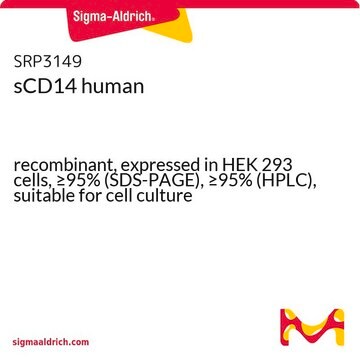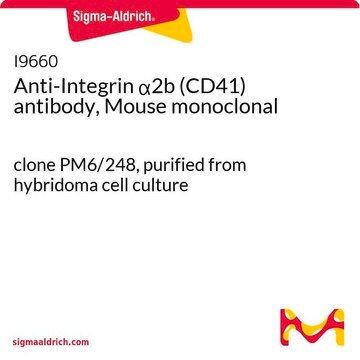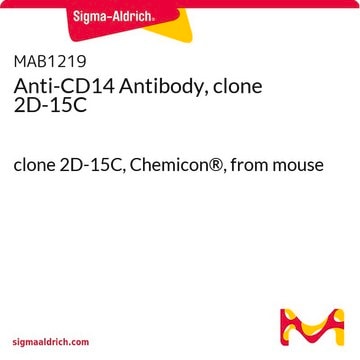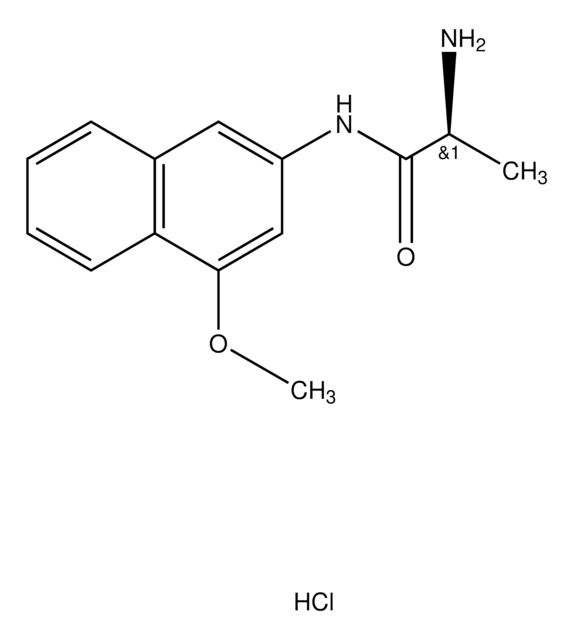5089
CD14 human
recombinant, expressed in E. coli, 0.5 mg protein/mL
About This Item
Productos recomendados
origen biológico
human
recombinante
expressed in E. coli
descripción
0.1 mg recombinant human CHD14 in 20 mM Tris-HCl buffer, containing NaCl, KCl, EDTA, L-arginine, DTT and glycerol.
esterilidad
Filtered sterilized solution
Análisis
≥90% (SDS-PAGE)
formulario
liquid
envase
pkg of 100 μg
concentración
0.5 mg protein/mL
técnicas
cell culture | mammalian: suitable
nº de acceso
NP_000582
Condiciones de envío
dry ice
temp. de almacenamiento
−20°C
Información sobre el gen
human ... CD14(929)
Categorías relacionadas
Aplicación
Use this procedure as a guideline to determine optimal coating conditions for the culture system of choice.
1. Thaw CD14 and dilute to desired concentration using serum-free medium or PBS. The final solution should be sufficiently dilute so the volume added covers the surface evenly (1-10 μg/well, 6 well plate).
2. Add appropriate amount of diluted material to culture surface.
3. Incubate at room temperature for approximately 1.5 hours.
4. Aspirate remaining material.
5. Rinse plates carefully with water and avoid scratching bottom surface of plates.
6. Plates are ready for use. They may also be stored at 2-8 °C damp or air dried if sterility is maintained.
Secuencia
Nota de preparación
Código de clase de almacenamiento
10 - Combustible liquids
Clase de riesgo para el agua (WGK)
WGK 2
Punto de inflamabilidad (°F)
Not applicable
Punto de inflamabilidad (°C)
Not applicable
Certificados de análisis (COA)
Busque Certificados de análisis (COA) introduciendo el número de lote del producto. Los números de lote se encuentran en la etiqueta del producto después de las palabras «Lot» o «Batch»
¿Ya tiene este producto?
Encuentre la documentación para los productos que ha comprado recientemente en la Biblioteca de documentos.
Nuestro equipo de científicos tiene experiencia en todas las áreas de investigación: Ciencias de la vida, Ciencia de los materiales, Síntesis química, Cromatografía, Analítica y muchas otras.
Póngase en contacto con el Servicio técnico








